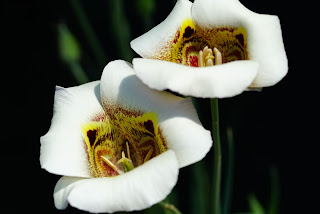"Christians stole Christmas from the Pagans and Capitalism stole it from the Christians"
Author Unkown.
I love the Winter Solstice, I actually love all the celestial events, I swear the older I get the more poignant they feel. Like every passing year the marking of the longest night seems to take on more meaning and significance. I'm not sure I can say why but every year I feel this and the longest day have some deeper spiritual meaning. Before this devolves into seasons greetings and mushy, sappy writing about getting older and such, I just really do want to say Happy Solstice! After tonight spring will be just a little bit closer!
Of course at Illahe Rare Bulbs we don't really need to have spring to enjoy flowers, here we have something in bloom every month of the year, and this year is no exception. The hoop petticoats are up and blooming like clockwork. Every year I tell myself I'm going to mass produce those babies and have pots of them ready for sale at Christmas time, unlike the paperwhites these don't need forcing and just bloom reliably every year starting at the Winter Solstice and staying around through the new year to offer a little winter cheer.
 |
| Narcissus cantabricus ssp. cantabricus var. folisosus hails from Southern Spain and into North Africa |
 |
| The Hoop petticoat that doesn't need forcing to bloom reliably at the darkest time of the year. |
family then off on the botanical adventure of a lifetime! Traveling Chile via a 4x4 looking for alpines and bulbs with my good friend Jane McGary. I will keep you posted on that adventure!
A solid 2" of rain fell this week as a Pineapple express hit the valley. Temps in the 60's felt a bit surreal for the later part of December.
If you don't hear from me before, Merry Christmas and a Happy New Years!
Mark




























































